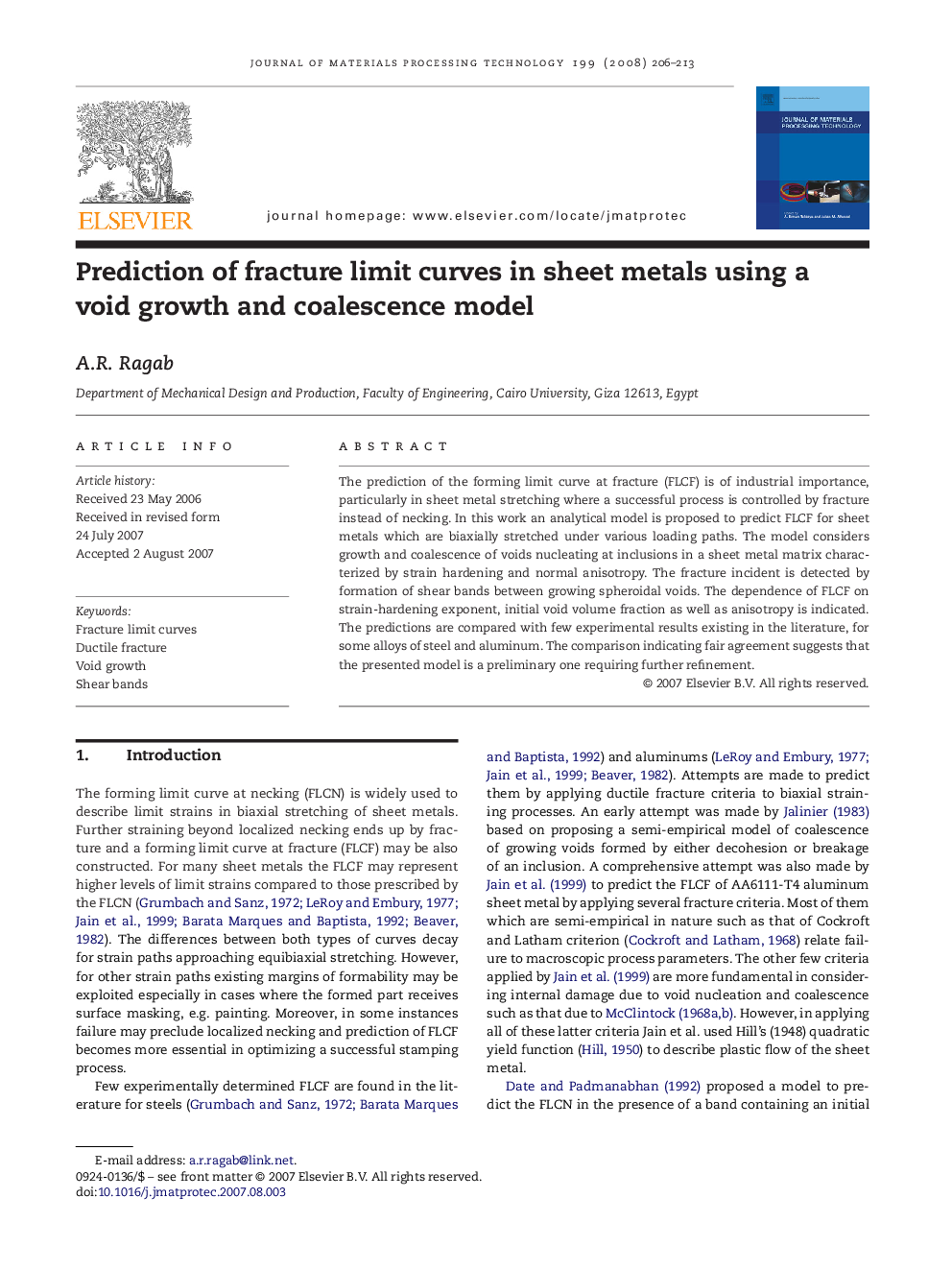| Article ID | Journal | Published Year | Pages | File Type |
|---|---|---|---|---|
| 791754 | Journal of Materials Processing Technology | 2008 | 8 Pages |
The prediction of the forming limit curve at fracture (FLCF) is of industrial importance, particularly in sheet metal stretching where a successful process is controlled by fracture instead of necking. In this work an analytical model is proposed to predict FLCF for sheet metals which are biaxially stretched under various loading paths. The model considers growth and coalescence of voids nucleating at inclusions in a sheet metal matrix characterized by strain hardening and normal anisotropy. The fracture incident is detected by formation of shear bands between growing spheroidal voids. The dependence of FLCF on strain-hardening exponent, initial void volume fraction as well as anisotropy is indicated. The predictions are compared with few experimental results existing in the literature, for some alloys of steel and aluminum. The comparison indicating fair agreement suggests that the presented model is a preliminary one requiring further refinement.
